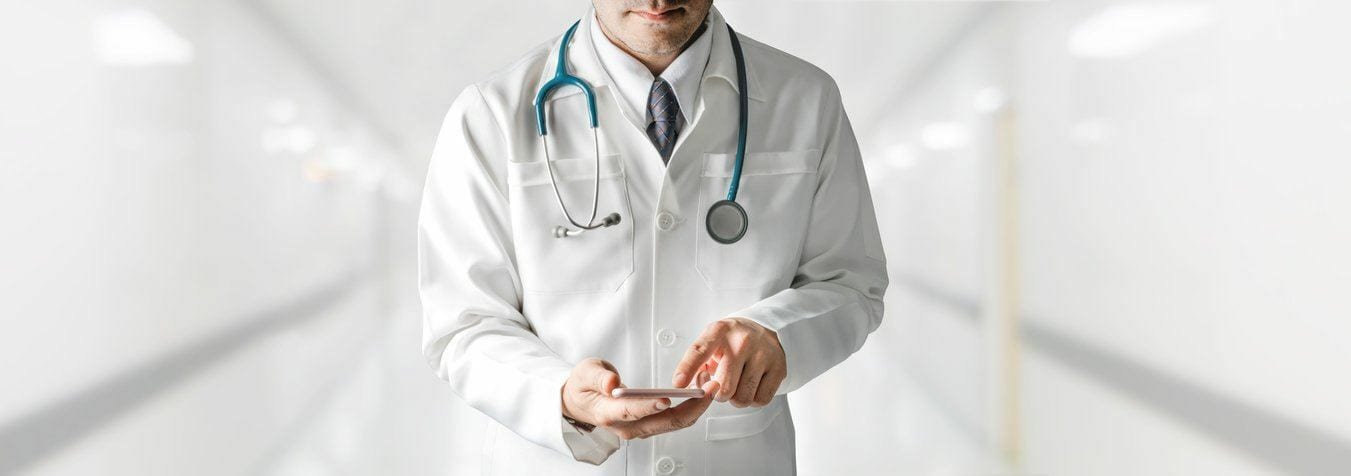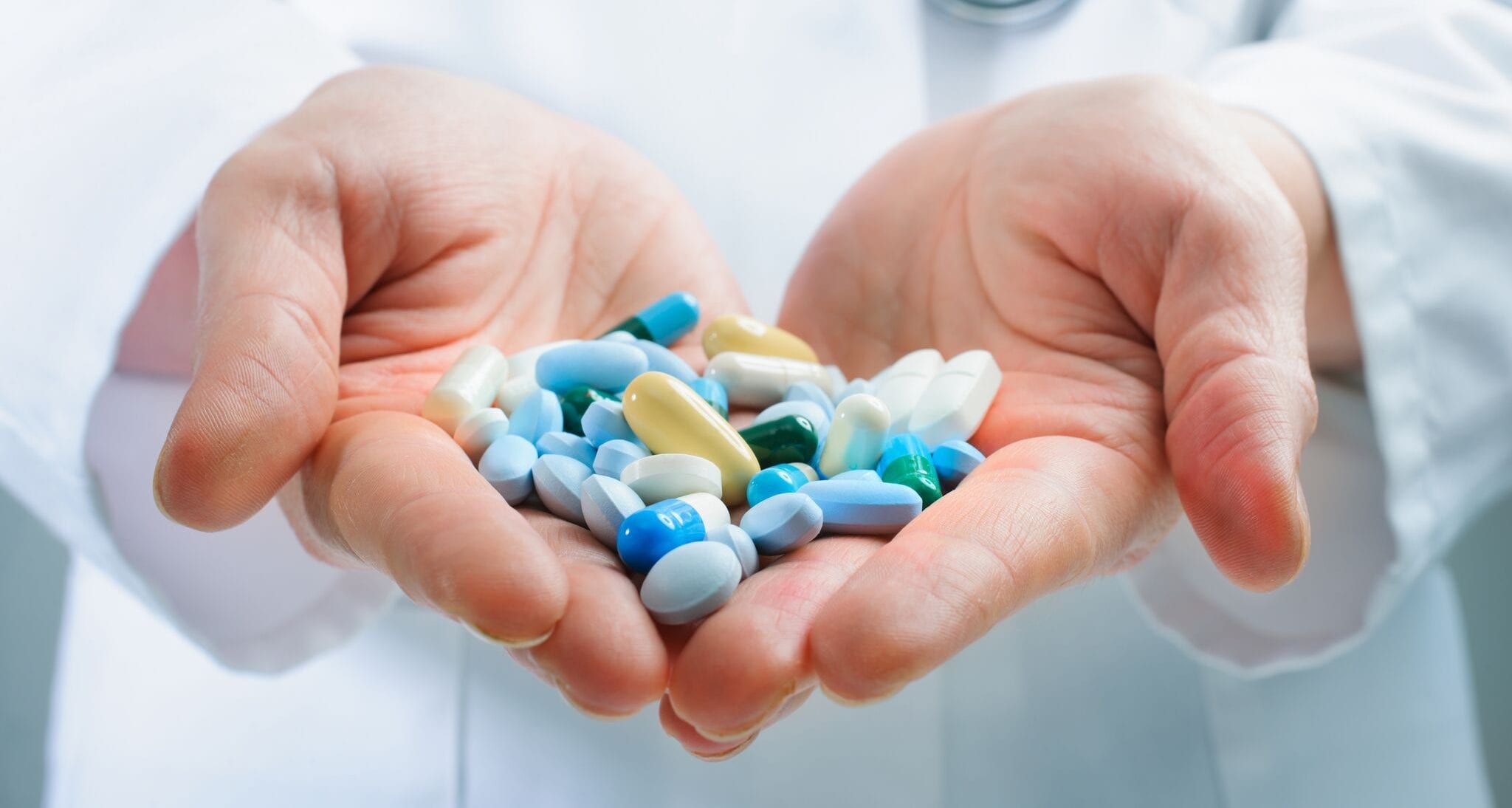Thanks to the healthcare apps, we all have a tiny doctor right in our pockets. Whether we have a serious health condition or merely trying to keep track of our health and body, the mHealth apps have become a constant in all our lives. And with that in mind, the app makes and inventors have landed in the fields with their own ideas and solutions for healthcare apps.
The huge variety of healthcare apps, ranging from the dietary application to keeping track of blood pressure and heart rate makes it a little tricky to make a fixed list of features. There’s also the variation between the users, ranging from ordinary patients to highly skilled doctors and hospital employees. Depending on the users and what they are using the app for, the healthcare application needs to have different sets of features.
The field of medical mobile app development is definitely complicated. And that’s why before you start listing off the many features, you need to understand the different types of medical applications and how they are used by the different user bases.
The Various Faces Of Healthcare Medical App
Based on the uses, the healthcare app can be divided into many types. But here are three major types of healthcare apps and how they are being used by the users today.
Patient App
Patient apps are for, well, patients. There are many other subtypes of these applications, but ultimately, they are all used by ordinary patients. They are built with the patients in mind, helping them to keep track of their health, symptoms, vitals, as well as order medicine, book doctor’s appointments and many more.
Patient apps are designed to make it easy for patients to acquire medical treatment in a more feasible way. This way they have more control over the entire process and know what exactly is happening throughout the entire treatment.
Doctor’s App
The doctor’s apps are for doctors, that much is obvious. These apps are used by healthcare professionals to treat their patients in a better and enhanced way. Doctors can access patient data anytime they want for faster treatment. Added to that is the benefits of being visible online so that patients can check them out and book appointments.
Doctor’s apps give the doctors more power in their hands. The features of the doctor’s apps are designed to help them treat their patients better.
Hospital/Clinic App
The hospital and clinic apps are designed especially for the employees there. This is a swift way of keeping up with the employee and patient data. The hospital app will have a clear listing of all the patients, why they are admitted and wherein the building they are. Along with the patients, it will also list out all the doctors, their specialties, and where they can be found in the building. Hospital apps are basically a huge mobile database accessible to the employees.
Each type of app mentioned above has different types of feature requirements. But some features always will overlap between the different kinds of apps. Here is a brief list of some common and type-specific features that you need to consider when building a healthcare app.
Healthcare Apps: Common And Uncommon Features
Choosing the right healthcare medical app features is not easy. We have already discussed the type of apps above, and now we are going to discuss the different kinds of features you need to include in your app. So without further ado, let’s get on with it-
Sign Up/Login
Signing up and logging in is a common feature for all types of healthcare apps. This feature lets the users create their own accounts in the app, which ultimately helps them to personalize the way they use the application.
However, you have to make sure that the onboarding feature is not at all complicated for the users. Don’t ask them too many questions before they have even created their account. Give them an easy signup option through social media to sign up options. This way they can sign up and log in with just a tap and don’t have to jump through hundreds of hoops to create an account.
Account Management
Once the account is created, the users need to be able to manage and personalize that account. And that’s why the account management feature is incredibly important.
The users can access the account management option through the settings. They can then proceed to complete their profile with their details. This is a common feature between all types of healthcare apps, which means that the account details will differ from app to app.
For a patient app, the details field will be for patient names, their ailment, what vitals they want to track, uploading the scanned copy of any medical documents, adding contact information such as mail ids, contact numbers, etc. Once the users have added all the necessary details, they can tweak up other details, such as their usernames, profile pictures, etc.
For doctor’s apps and hospital apps, the account details feature can be a little similar. After the users have signed up, they can proceed to add their contact details, add their institute’s name, their designation within that institute, edit their profile information, etc.
The account management feature enables the users to personalize their user experience on that app. Skipping over it might seem like an unforgivable offense to the users on your part.
On-Demand Medicine
This one is specific to the patient app.
Just like uber-for-x apps, on-demand medicine features lets the users order medicine when they need to. With this feature, the users can restock their medicines without having to visit the pharmacy. While you can easily make an entire app based on Uber for Pharmacy application, just adding this feature on your regular patient’s app will be enough.
To help the users order medicine right from the app, you can list out all the pharmacies in their locality. They can easily choose their familiar pharmacy and order medicine from there. To make this feature complete, you will also have to add an online payment option on your app. The users will be able to pay for their medicine right from the application without having to face the fuss about cash on delivery and such.
With on-demand medicines, the patients will find it easy to stay on top of their medications. The uber for x app model has proven to be especially useful for the medical industry. So if you are thinking about developing a custom mobile healthcare application, you can add this little feature to give your app a slight edge over all the others.
Doctor Discovering and Booking Appointments
Specific to the patient’s application, doctor discovery and booking appointments can help the patients to discover doctors around in their city and easily book appointments with them.
The users can search for doctors using filtered search options. This lets them search for doctors based on proximity, specialty, experience, reviews and ratings, the hospitals they are related to and many more. Once they have found the right doctor, they can book an appointment right from the application without any problems. And if something comes up and it becomes impossible for the users to make the appointment, they can also cancel the appointment right from the app.
The users should also be able to leave reviews about the doctor based on their experience. The reviews will help other users of the application to make decisions about visiting a doctor easily.
Digital Prescription and Reports
The digital prescription and reports feature are common to all three kinds of applications. Handling and carrying medical documents, especially various medical reports can be a little problematic. There are chances of misplacing the documents. And that’s why the feature of digital prescription and reports can come in handy for the users.
With this feature, the patients will be able to quickly share their medical documents with the doctor for viewing, which means they don’t have to carry different types of documents. The doctors can easily access these digital records anytime they need to, making the entire medical treatment process a lot faster.
Having a digital copy of a patient’s medical records stored in the hospital database means the hospital employees can access that report right from the hospital app. Going digital with medical documents can work amazingly to speed up the entire process of medical treatment.
Wearable Connection
If you are thinking about healthcare app development, then you should also think about wearable connection features.
Wearables have become one of the most popular technology trends in the world. Having a wearable connection feature within your application will help not only the users but also the doctors.
When we talk about wearables, we don’t only mean gadgets like Fitbits. There are all sorts of healthcare wearables out there in the market, and enabling your app to connect with the wearable devices can help the users to keep track of their health situation a lot better.
The doctors can provide the patients with better treatment when they have a clear visual of the patient’s vitals and how they are fluctuating. This improves the chances of faster diagnosis as well as faster treatments. The wearable connection feature can take your Mobile health application to another level of success entirely.
Cloud Storage Option
Medical data is an extremely delicate yet important thing to handle. A patient’s medical data acts as the background for all the future treatment they are going to receive. And that’s why you need to provide a better way for them to store their data.
Data stored locally has chances of being corrupted or deleted. Adding a cloud storage feature will help the users to store their data on the cloud storage without any problems. They can also sync up their new data seamlessly.
Listing of Doctors and Departments
This feature is important for a hospital application. Having the doctors and departments listed out on the app will help the patients to find out whether a specific kind of doctor is available in a hospital or not. This way they will find it easier to visit hospitals and which doctor to get appointments for.
An Overall Outlook: Healthcare App Features
There are so many types of healthcare apps and features to choose from that it can get a little confusing. However, building a Healthcare App has proven to be incredibly helpful, and as a result, the market is crowded with healthcare apps. If you are still confused about how to build a healthcare application or what kind of features you should be included, take a look at your direct competitors. This way you will get a strong idea of the kind of features your app needs to become a success in the mHealth app market.
doctor on cell phone,medicine in hands -DepositPhotos



